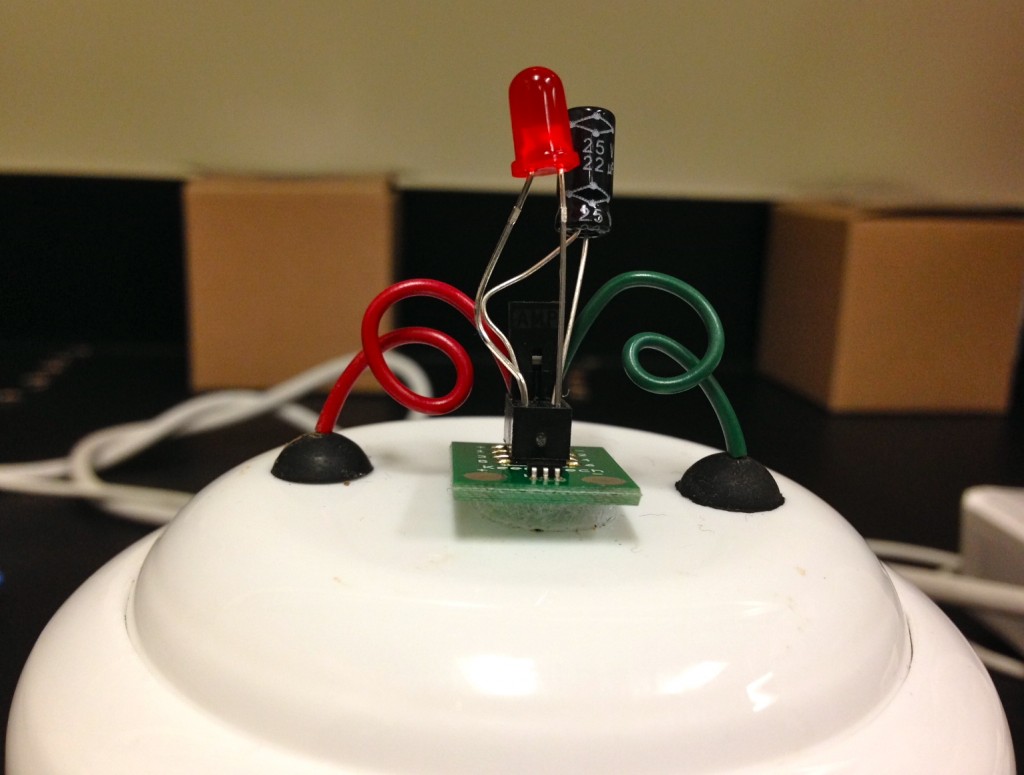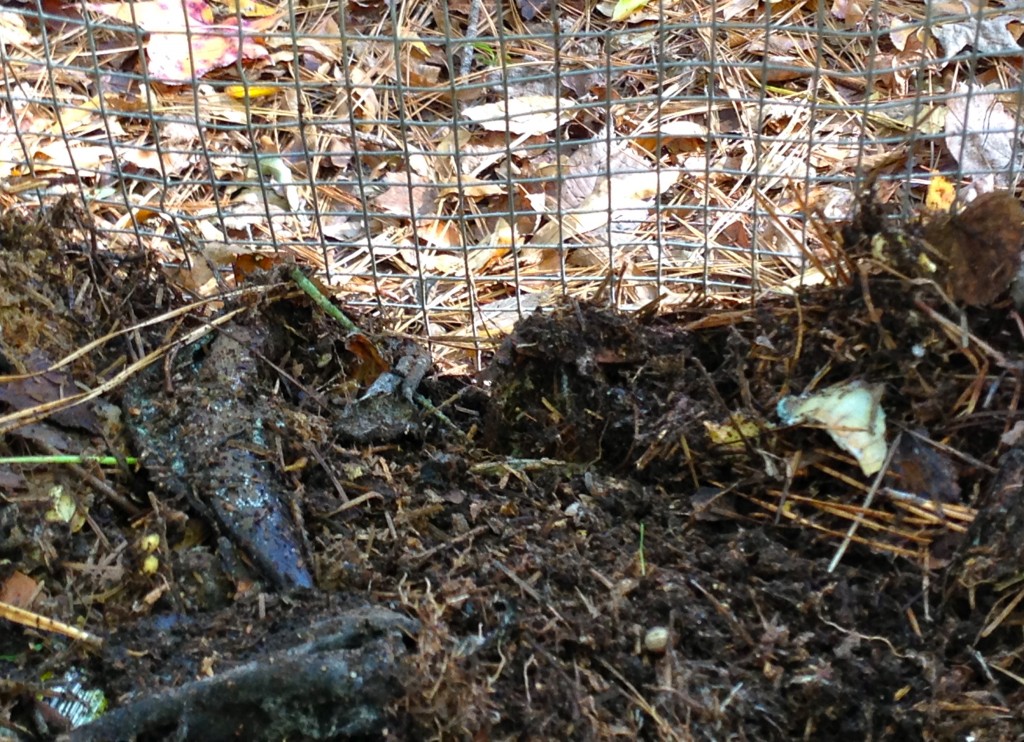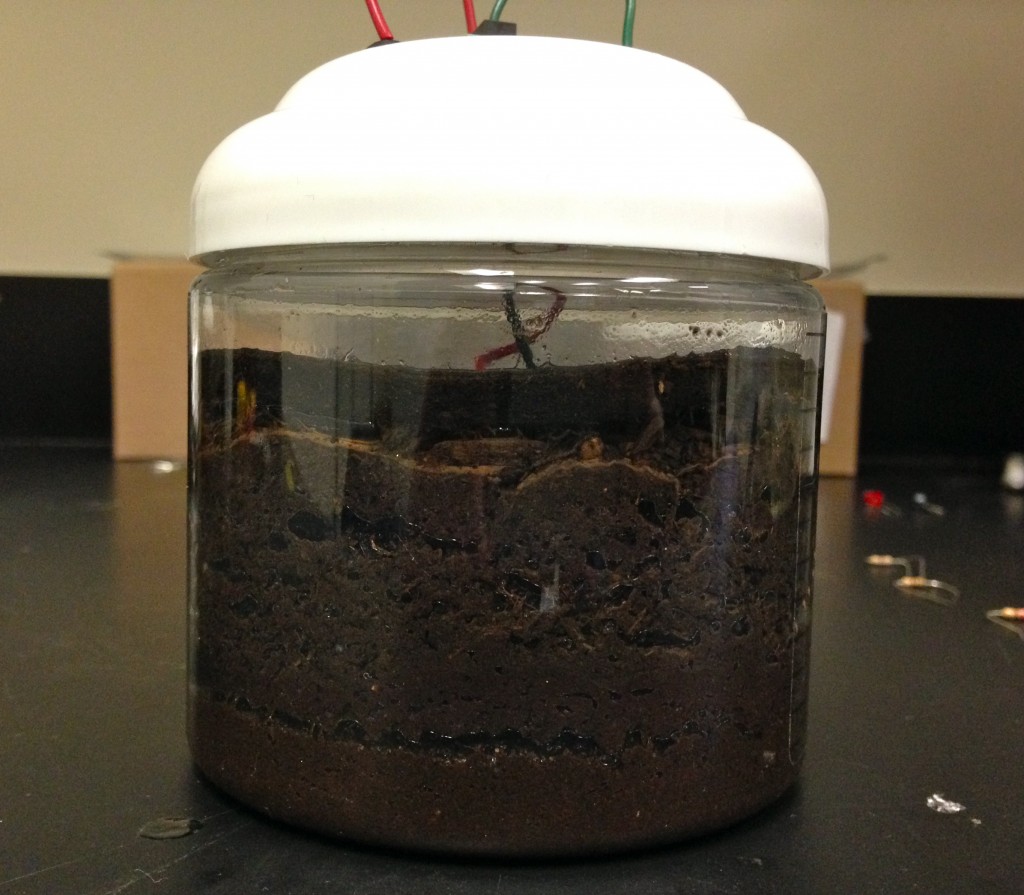An unusual subject line appeared in my inbox last week. “THEY’RE BLINKING!,” it read. The e-mail was from a classmate in the Bioenergy course I’m taking, and it referred to the tiny red lights we affixed to our newly built microbial fuel cells (MFCs), or “MudWatts.” They were generating electricity, a cause for excitement.

The Keego MudWatt kits we used come with everything you need to make an MFC personalized with a substrate of your choice. In an MFC, certain microbes called exoelectrogens consume the substrate to generate energy and electrons. What’s special about them is they can release the electrons to metal compounds outside of the cell, as opposed to donating them to acceptors within the cell. In the cellular respiration that we are probably most familiar with, this electron acceptor within the cell is oxygen. The ability of exoelectrogens to release their electrons to external compounds is the basis of electricity generation within an MFC.
Where does one find these exoelectrogens? If researchers want to build an MFC with purely one species inside, they can order freeze-dried bacteria online from culture collections like ATCC. But these bacteria were originally found somewhere in the environment. Well-known and frequently used exoelectrogens are species of Shewanella and Geobacter. These bacteria are known for their ability to consume pollutants and can be found in soils and ocean sediments. Hence the term “Mud” in MudWatt. Soil is full of different microorganisms, including exoelectrogens, and is rich in nutrients and substrates for them to consume. We did some research before deciding on our substrate and any other compounds we might add to support growth. To get my MFC substrate, I dug into my backyard compost pile. In lab I added a small amount of acetate to the compost to give the microbes a boost with a simple carbon source.

We filled the MudWatt containers with our soil slurries, burying the anode of the MFC near the bottom of the container. The anode is an electrode on which bacteria can grow and donate electrons. Our anode was a disk of graphite fiber felt, and had plenty of surface area for growing a layer of microbes called a biofilm. Shewanella and Geobacter, mentioned above, have relatively long appendages called nanowires (photo) that are used to transport electrons to the anode even if the bacteria are not directly on the anode surface.
The electrons donated by this biofilm travel from the anode to the cathode through a titanium wire. The cathode is an electrode where the electrons react with oxygen and hydrogen to form water. It is made from the same material as the anode, but was placed at the top of the soil instead of underneath it, so it would be open to the air trapped inside the MudWatt. It is important that no oxygen or other electron acceptors are present near the anode, however, so that the exoelectrogens are sure to donate their electrons to the anode instead of an internal acceptor. Other microorganisms in the soil can helpfully consume oxygen, depleting it near the anode biofilm. For a visual on how the MudWatt works, you can also watch this short video made by Keego.

The different reactions taking place at the anode and cathode create a difference in electric potential at these two locations, and this difference is what creates an MFC’s voltage. The maximum theoretical voltage is about 1.2 V, and the highest measured voltage in a MudWatt is 0.92 V. When the anode and cathode are connected by the titanium wires, the voltage drives a continuous flow of electrons that make up an MFC’s electric current. An MFC’s power is the product of its voltage and electric current, and we can witness this power by the blinking rate of an LED light attached to the anode and cathode wires.

What could a soil MFC be used for? They can be implemented in the field to power remote sensors for long-term collection of environmental data. They are also used for powering useful devices like cell phones in rural or developing areas, though the power output is certainly limited with these fuel cells. Other substrates can be used in MFCs to generate power as well, such as wastewater. A commonly researched use of MFCs is wastewater treatment with simultaneous electricity generation, though active research is ongoing for this process to become economically feasible on a large scale.
Anyone with a Keego MudWatt can enter data from their MFC online, and join a citizen science project to determine how differences in substrate, design, and conditions affect MFC performance. What would you put in your microbial fuel cell? You can make your own bio-electricity with a soil MFC and join the experiment. If the soil substrate you use is nutrient-rich, then the electric current can last for years as bacteria continuously grow and donate electrons.
